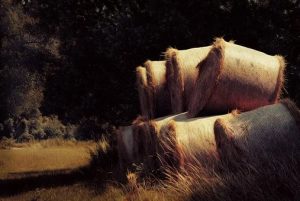Should You Be Using Silage Film?
The silage film was a vital part of animal feed nutrition, as it helped the production of perfect silage within an instant. In addition to this, it also ensures a much higher amount of value for the money spent on feeding the livestock. Therefore, it is crucial to apply top quality silage films during the proper processing of green vegetation and grass into silage for animal feed. This will ensure high-quality hay when the animals are ready to receive it from the straw house.

A good silage film should have a very strong cling to it, as this helps keep the wet grass and hay together. A silage film made from plastic will not be strong enough to maintain the hold of the hay and moisture. Therefore, it is advisable to use a good quality urethane-based silage film. This is because such material can withstand high amounts of heat, which means that the hay can be completely dried out without worrying about sticking to the silage film. Such a material also ensures that the silage film does not split when the hot air is released from the fire.
Depending on the type of animals being fed, one should consider the physical properties of the hay to determine the right type of silage film to be used. You’ll know this if you read Silage film reviews. For example, green vegetation can only sustain life in a few hours in the air, which means that it needs to be properly decomposed to the earth before properly feeding the animals. The most popular and effective form of cast film for this purpose is called the oxygen permeable film. It allows air to pass through the surface of the hay, but at the same time, oxygen can still penetrate the surface and is retained in the final product.
By reading Silage film reviews, you will learn that there are two types of oxygen-permeable films – the Twine and the Baled Silage Making Flap. The twine can be tied to the end of the bag using the twine wires or twine ties. Alternatively, you can use the bale silage manufacturing flap, which is tied to the bag securely. Both materials will enable the air to pass through the bag, and the amount of moisture retained in the final product will depend on the bag’s material and the length of time the material has been in storage.
The second type of material used in silage film production is the Cast Aluminum Silage Flap. This type of material will adhere to the bag in the same way as the twine. However, since it is made from aluminium, it is more resistant to corrosion than twine. It also contains a plastic coating that protects it from the elements. The weight of this type of material will be slightly higher than the weight of the twine.
These two types of bags are not the only components necessary for the effective manufacture of silage film. Other components are necessary to ensure that silage film bales can be used for the purpose they were designed for. The bags must have an external seal that will prevent the moisture from leaking out. This seal needs to be made at an angle to be properly secured to the bag. Once the seal is successfully installed, the product will be ready to go.
Agricultural nonwovens are not just made for use in the food processing industry. You can use the bags to store excess milk, produce and even fish waste. You will find that there is a wide range of stretch bales available at the local supermarket. These are the standard bales that are used to cover large areas. You may even be surprised at the sheer number of different agricultural nonwovens that you can use.